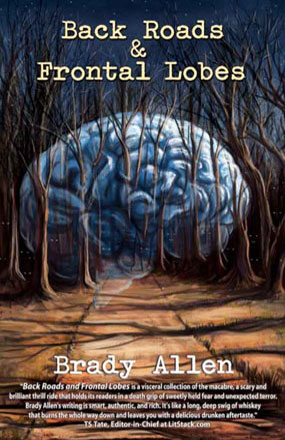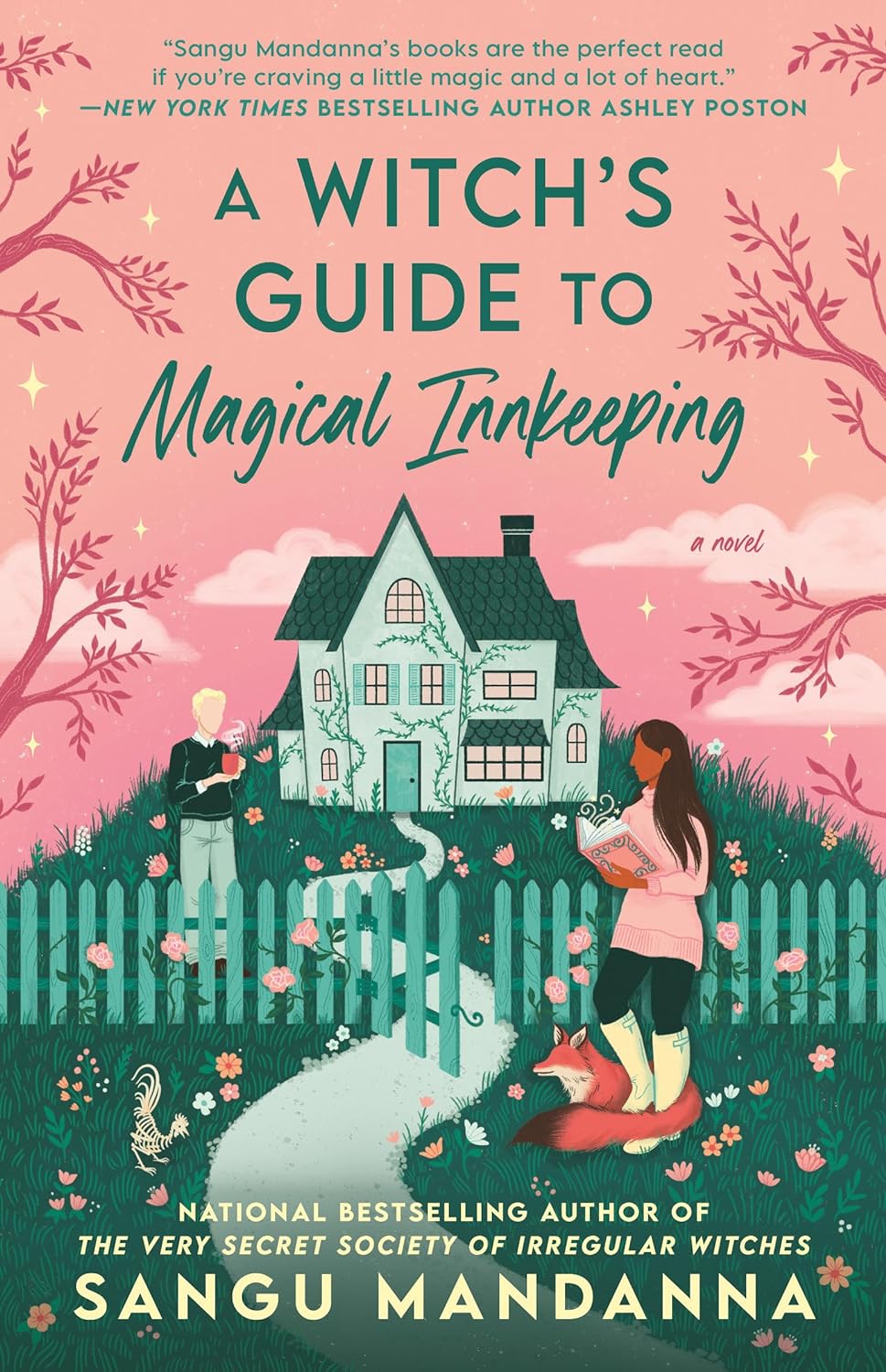 On Wednesday author Brady Allen stopped by for a guest post entitled “On Being a Deranged Pervert,” in which he explored the connection between people’s deep, dark desire for sex and violence, gore and horror, and the responsibility of fiction to be honest to that truth.
On Wednesday author Brady Allen stopped by for a guest post entitled “On Being a Deranged Pervert,” in which he explored the connection between people’s deep, dark desire for sex and violence, gore and horror, and the responsibility of fiction to be honest to that truth.
The 23 short stories in Allen’s debut, Back Roads & Frontal Lobes, more than demonstrate that Allen not only talks the talk, but walks the walk when it comes to confronting the often ugly truths about humanity in his fiction. The characters in Allen’s stories don’t just skirt the line of decency and civility, they treat it as the starting line for a race into the dark and profane, the surreal and disturbing.
The book’s namesake story, “Back Roads and Frontal Lobes,” manages to combine all of the above in one massive wallop. Temple Hannigan isn’t quite sure where he’s going, he just knows he can’t get there fast enough. As he drives the highway one night trying to outrun the memory of a cheating wife and a man brutally beaten to death, Temple finds himself taking the exit for Death City. The disturbing things that await him there are eclipsed only by the massive swerve ending Allen serves up.
“Not Over Easy” is a truly odd duck of a story, which I mean in a good way, one involving the last days of a dying man… or is he? Though afflicted with a seemingly never-ending nosebleed and eager to tell everyone whose path he crosses that he’s dying, the reader is never quite sure whether the story’s lead is actually dying, or whether the affliction from which he suffers is more of the mental variety. Flashbacks to disturbing events from the man’s youth only underscore the uncertainty. One thing is for sure, you’ll never look at the runny yoke of your eggs over easy quite the same way again, I assure you.
“Devil and Dairy Cow” finds an enchanting, free-spirited young girl named Jersey – nicknamed the Jersey Devil because of her legendary marker fights with classmates – spinning an almost magical spell over her elementary school peers, much to the consternation of one particular teacher. Things come to an interesting head one day while the children play in the rain at recess, a day after which no one present will ever be quite the same again.
The post- apocalyptic “Praying” is set in a world reeling from the near-extinction of humanity. Though no one’s entirely sure, it’s taken as truth that the virus that ravaged the population somehow sprang from the insects. Unfortunately, the safest places for survivors to live are remote, rural areas, also the places where the insects particularly thrive. In what is clearly trademark Allen style, a twist ending on this one not only gives the title a clever dual meaning, it will have you going back for a reread to see what clues you may have missed.
Though just a sampling, those stories give you a pretty good feel for the incredible variety to be found in Back Roads & Frontal Lobes. Allen’s stories run the gamut: straight-up horror, hillbilly noir, fantasy, and the surreal are all represented, as well as a few which defy easy classification. However, there are common threads which run through the collection. Whether subtle or overt, there is a pervasive sense of isolation among the characters in Back Roads & Frontal Lobes. Even those surrounded by other people are still somehow apart, and many of them are driven or haunted by feelings of loneliness and despair.
Allen’s approach to the crafting of his tales also manages to create a distinct sense of place for each; even those which given their subject matter should feel like they “fit” in the same universe, don’t. The result is that a genuinely new and unique adventure awaits the reader with the beginning of each new story. And in keeping with the idea that people have a deep, dark desire for sex and violence, gore and horror, all are more than represented here.
Allen believes fiction should reflect even the ugliest truths about humanity, and you better be prepared to handle the truth if you tackle Back Roads & Frontal Lobes, because while Allen is telling tales, he ain’t telling no lies.






Charles Wingfield
October 15, 2012 - 4:08 PM